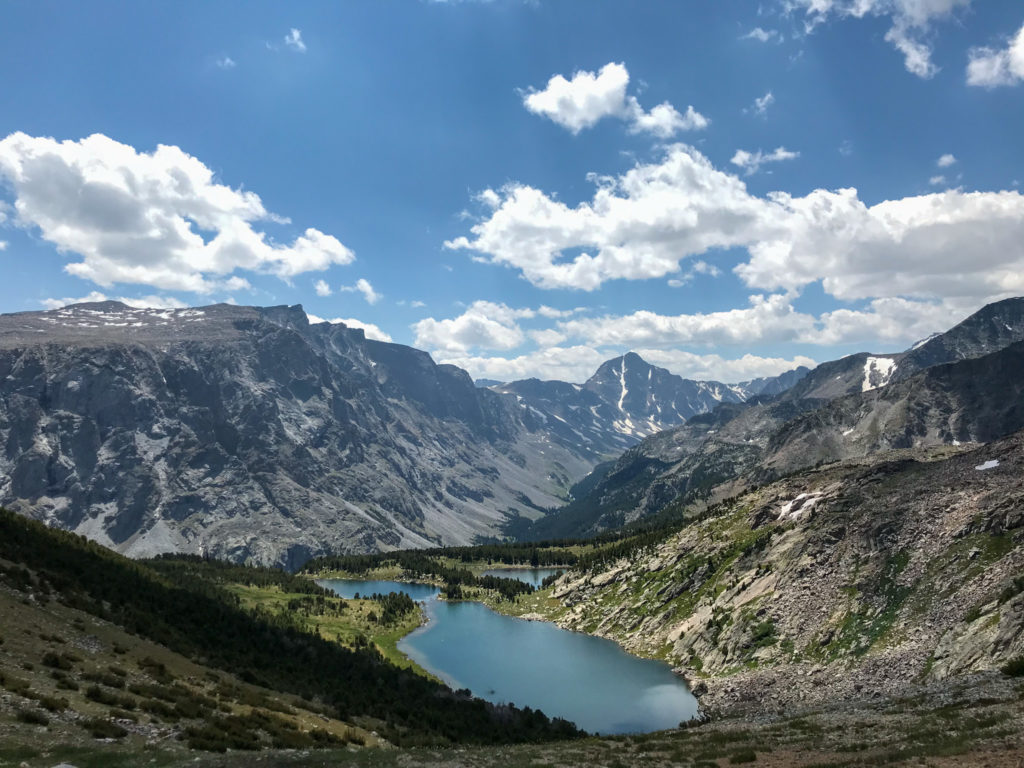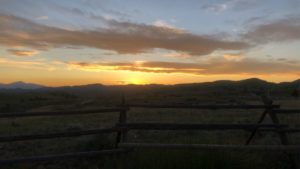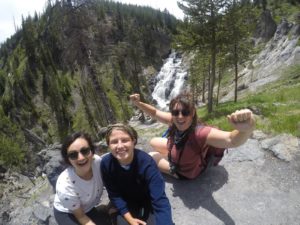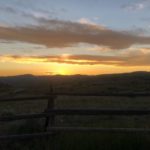By Robin Adams
It’s hard to believe that just over a year ago I had never heard of Red Lodge, Montana, and now it’s equally hard to imagine what life would be like without this little mountain town as my home. While it’s disheartening to think about this community and Montana as a whole losing their Energy Corps members, it’s also an opportunity to think critically about what this program could look like in the future.
It’s my hope that the existing work Energy Corps members do on energy conservation activities can be combined with general equity and resilience building, especially in lower income rural communities. According to Climate Smart Montana, there are currently 10 tribal and local governments with resilience plans in the state of Montana. The average population these plans serve is roughly 42,000 residents – making Red Lodge something of an anomaly with our City Energy Conservation Plan and less than 2,300 residents.
So how do small, rural communities like the Red Lodge area become more resilient?
I reached out to five residents of this area that are particularly active in development and planning initiatives, disaster preparedness, and nonprofit leadership. They provided their perspective on the assets we have and challenges we face to our ability to respond to, withstand, and recover from the COVID-19 crisis and projected climate disruptions cited in the 2017 Montana Climate Assessment like increased wildfires and droughts. While we’re far from perfect, all the respondents said that they consider Red Lodge to be a resilient community. Their take on why that is could inform the future work that a program like Energy Corps could focus on, or that other small communities could independently prioritize.
I’ll start with the challenges highlighted by the respondents. In Red Lodge, there is a plethora of second home-owners and a lack of affordable housing. We’re a resort town, and there is a lack of economic diversity with a strong reliance on seasonal tourism. As is the case with most small communities, we have limited local resources especially when it comes to tackling the current public health crisis. It can also be difficult to provide access to information and planning participation to the more rural residents of this area that may not have an internet connection. Add to all that a harsh physical environment with fire danger in the summers and heavy snowfall in the winters, and there’s our work cut out for us.
Despite these challenges, here’s why all five residents said they consider Red Lodge to be a resilient community:
Networks
This is a big one that every respondent highlighted. Strong relationships between neighbors and across the business, government, nonprofit, and public sector are essential for a strong community. Tom Kohley, the Carbon County Disaster and Emergency Services Coordinator, asserts that tight-knit communities develop compassion for their neighbors and are more likely to help them when they’re in need. This “adds to the resiliency of the community and helps us withstand any emergency or disaster.”
Another benefit to strong networks is ensuring that stakeholders’ voices are heard throughout decision-making processes. The Resilient Community and Youth Programs Director at the Red Lodge Area Community Foundation, Therese Picasso-Edwards, has “been impressed with the continued planning and preparation of our county’s disaster preparedness team. They include community-wide stakeholders, like the Foundation, in their planning, partnering and decision-making.”
A focus on networking and strengthening relationships between community groups is already a large part of my service in Red Lodge, and I’d love to see that continue to be a priority for whatever form Energy Corps takes in the future.
Planning
A resilient community has a vision for the future and ample opportunity for the public to get involved with shaping plans. Jeff DiBenedetto, a member of the City of Red Lodge Planning Board, believes that “these assets are present in the community.” This is also supported by Tom Kohley, saying that there are “many skilled individuals in our community who we can rely on to assist with planning, operations, logistics and finance of large incidents.” Despite difficulties with outreach to the more rural communities in our county, Susann Beug of the Carbon County Resource Council highlights the unusually high number of educated, retired individuals that are willing to bring “a more worldly view” and be active in public meetings, hearings, and other planning processes that affect us.
Community resilience and climate action plans are lacking in small communities throughout Montana. It takes dedicated individuals to advocate for, create, and implement such plans. People in service positions like Energy Corps can greatly assist smaller communities with providing resources and support.
Volunteerism
Susann Beug aptly points out that “we have a huge volunteer force that wears many hats and fills many needs.” Corey Thompson, the City Sustainability Board Chair, agrees and cites the unusually high number of healthy nonprofits (over fifty-five) for an area with such a small population. Having people in the community willing to donate their time and efforts is a HUGE asset. It takes time and a passionate individual to make a public comment at a Council meeting, or join a board, or help our recycling center sort through cardboard.
I’m thankful for the volunteer attitude that Energy Corps has fostered in both myself and helped me stoke in the community. I think that honing in on sustaining a volunteer force will help us maintain our resilience to adverse situations.
This is really just scratching the surface, but I hope it’s a helpful framework to consider when incorporating resilience building into smaller communities. The full responses that everyone provided are also very illuminating to the situation in Red Lodge specifically, they’re published on the City’s website at bit.ly/RLresponses.
One final note – I really can’t believe this is my last blog post! This year of service gave me so many opportunities for personal and professional growth, and in a crazy beautiful place to boot. Very thankful for everything, and looking forward to staying in town for another year after my service term is finished.








